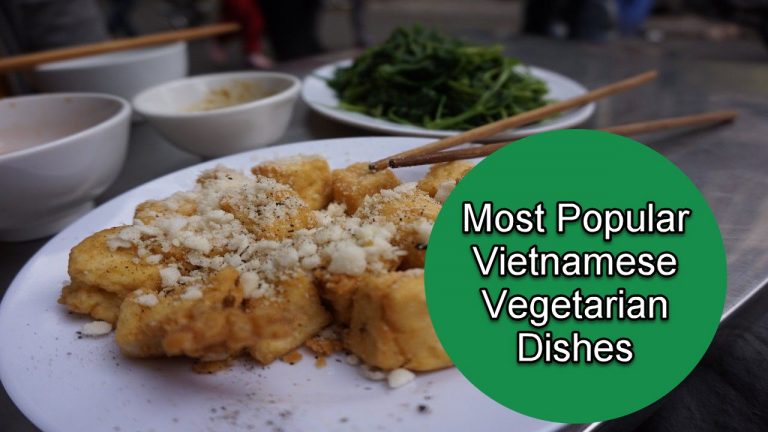12 Most Popular Brunei Vegetarian Dishes
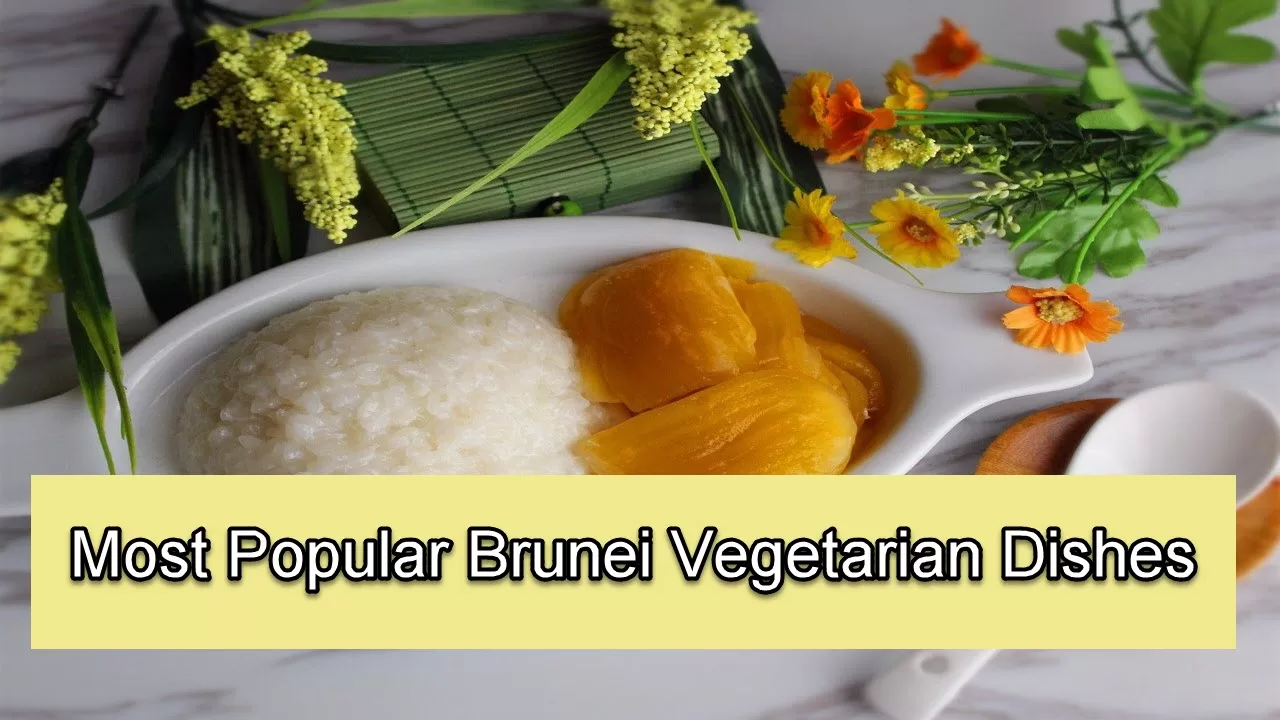
Bruneian cuisine is comparable to and significantly affected by Malaysian, Singaporean, and Indonesian cuisines, with additional influences from India, China, Thailand, and Japan. Fish and rice are staple foods, as they are throughout the region, while meat is more expensive and thus less prevalent. The meal is halal and pork is avoided due to the Islamic religion’s supremacy. Brunei prohibits the consumption of alcoholic beverages. Game animals such as wild birds, sambar deer, and barking deer are hunted in rural areas. Because of the scarcity of agricultural land and the island’s geographical area, fish is the most common form of protein. In this article, we will explore more about Bruneian cuisine, particularly the most popular Brunei vegetarian dishes. If you want to learn more about this Brunei vegetarian recipes, scroll down and continue reading.
Brunei Vegetarian Dishes
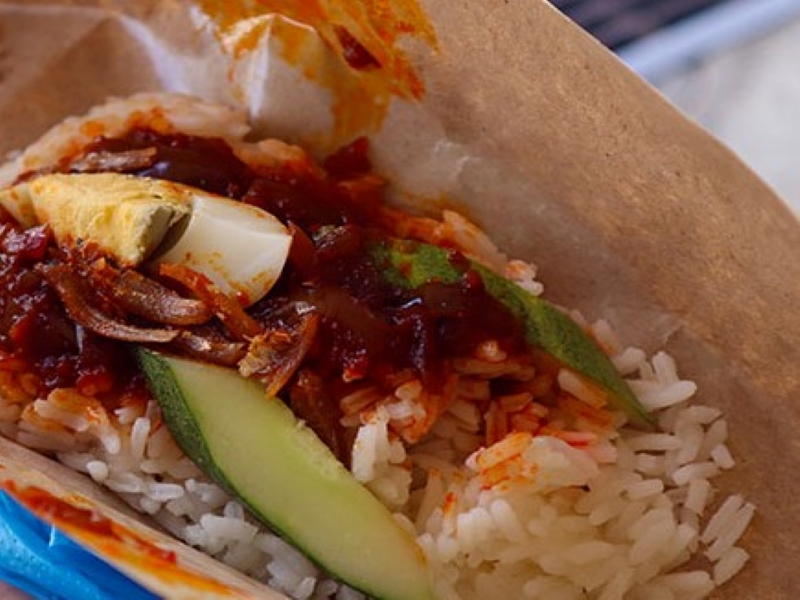
Nasi Katok
Nasi katok, or “knock rice,” is a famous dish in Brunei made up of plain rice, fried chicken, and sambal, a spicy relish made up of ground chili peppers and a range of other ingredients such as shrimp paste, garlic, ginger, shallot, scallion, palm sugar, lime juice, vinegar, spicy peanut sauce and anchovies. Traditionally, nasi katok is served wrapped in brown paper. This can be a vegetarian dish, you can prepare the dish without the addition of chicken.
A traveler arrived in Bandar Seri Begawan in the middle of the night, according to story. He knocked on doors for hours, looking for food. He had no luck until one eatery eventually gave him a chance. The owner of the restaurant accepted the traveler, but he did not have access to the eatery’s usual ingredients.
In a rush to acquire enough food, the owner grabbed whatever he could find: rice, chicken, and sambal. He arranged these ingredients on a platter and offered it to the traveler. Nasi katok literally translates to “rice knock.”
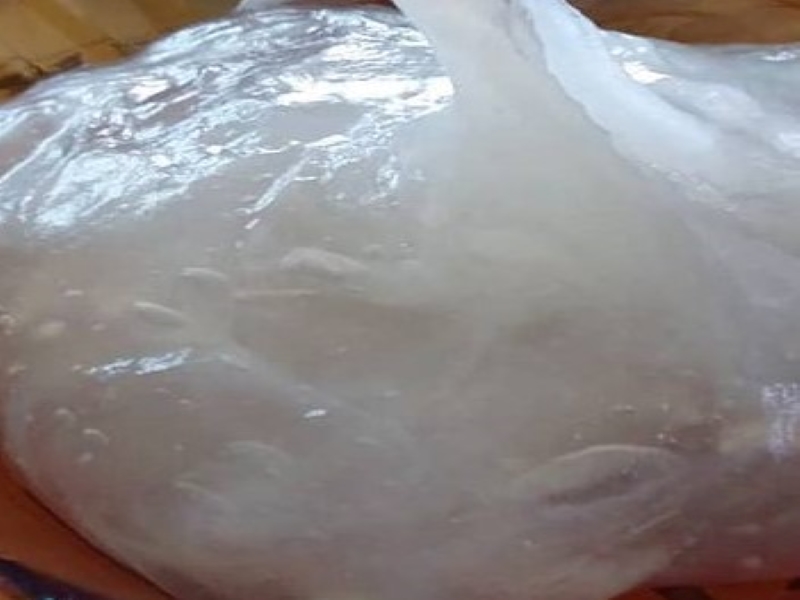
Ambuyat
Ambuyat is a dish created from the internal trunk of the sago palm tree. The sago palm tree can be found in Borneo’s woods. Its interior is made up of a starchy material that resembles tapioca. This is the main component of ambuyat. The starch is extracted from the tree and combined with water until it achieves a sticky, glutinous consistency with a paste-like texture. It’s a bland starchy substance that’s similar to tapioca starch. Ambuyat is Brunei’s national dish, as well as a regional specialty in Malaysia’s Sarawak, Sabah, and the federal territory of Labuan, where it is also known as linut.
Ambuyat is eaten with chandas, a bamboo chopstick, by rolling the starch around the prongs and then dipping it into a sauce of various flavors. It is usually prepared with a spicy, sour dip called cacah. Though, Tempoyak is one of the best sauces that Bruneian societies are familiar with.
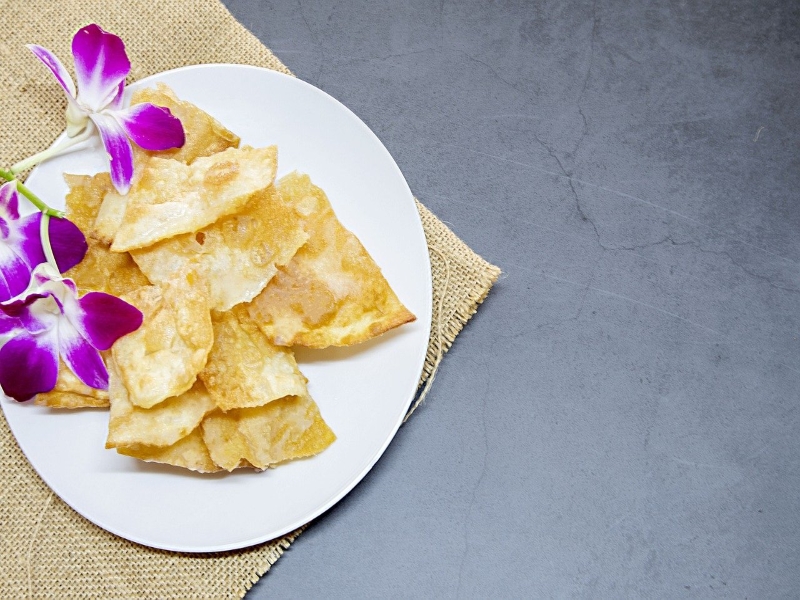
Roti Canai
Also known as roti prata. Roti is a famous Indian flatbread dish in Southeast Asia, especially in Brunei, Indonesia, Malaysia, Singapore and Thailand.
In addition to standard roti, Brunei has roti murtabak, which has sweet or savory fillings, and roti canai, which has buttery crispy layers and is usually eaten with curry. It is typically served with dal or other curries, but it can also be cooked with a range of sweet or savory ingredients like as meat, egg, or cheese in a variety of sweet or savory variants. Roti prata is a light and fluffy puff pastry pancake that is flipped and spun to absorb air before being pan-fried till golden brown and crispy.

Mango Sticky Rice
Mango sticky rice is a Southeast Asian and South Asian delicacy made with glutinous rice, fresh mango fruit, and coconut milk that may be eaten with a spoon or through your hands.
Mango sticky rice waffles, a novel twist on a traditional Bruneian dessert, are the answer. Compressed and lightly toasted on a waffle iron, chewy glutinous rice is blended with sweetened coconut milk before being covered with a sweet coconut milk sauce and served with fresh mango fruit. It’s a simple dish with perfectly calibrated flavors. When cut through with the refreshing taste of mango fruit, the sticky rice’s sweet and salty elements blend so well together.
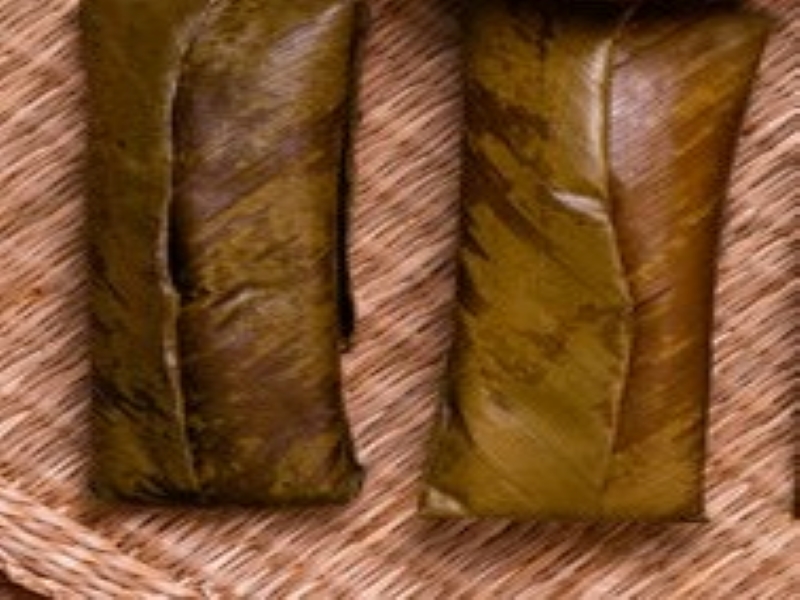
Kelupis
Kelupis is a traditional snack consumed by both Bisayas and Bruneian Malays in Brunei and the Malaysian states of Sabah and Sarawak. Glutinous rice is cooked in pandan-flavored coconut milk before being wrapped in daun nyirik leaves.
The rolls are steamed and then hung to dry so that there is no excess water and the rice inside won’t moist. This snack is tasty enough to eat on its own once unwrapped, but it’s usually served with curry or rendang, a spicy pork meal.

Selurut
Also known as Clorot, celorot, cerorot, or jelurut. Selurot is a typical Bruneian and Indonesian sweet food (kue or kuih) made of a sweet and soft rice flour cake with coconut milk, wrapped with janur or young coconut leaf and shaped into a cone. It’s a popular sweet snack that’s popular in Indonesia, Malaysia, and Brunei.
Coconut milk is blended with gula jawa (palm sugar), pandan leaf, salt, and water that has been heated until done. This sweet liquid is then poured evenly over rice flour and sago or tapioca flour. The janur, or immature coconut leaf, was coiled into a long cone, resembling a little trumpet, which was then fixed and put upright. The sweet dough was then poured into the coconut leaf cones until they were three-quarters full. The top section is then filled with a coconut milk, rice flour, and salt combination. After that, the filled cones are steamed for around 15 minutes, until the dough within has cooked and set.

Penyaram
Penyaram, also known as pinjaram, kuih UFO, or kuih telinga tikus, is a traditional kuih for the Bajau people of Brunei and the Bruneian Malay people of Malaysia’s state of Sabah.
These little delicacies, shaped like a UFO, are comprised of a deep-fried rice flour and coconut milk dough.
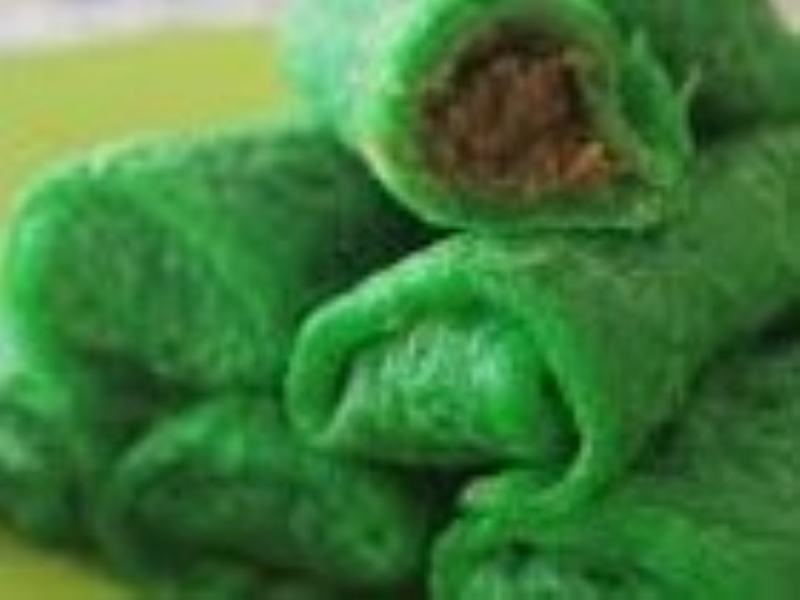
Kuih Gulung
Kuih, also spelled as kueh, is a term used in Southeast Asia to designate a range of dessert varieties. The most prevalent type of kuih in Brunei features an exterior made of shredded or creamed coconut cooked with palm sugar. In Brunei, this form of kuih is known as kuih gulung, due to its brilliant green color. Kuih gulung is also known as kuih ketayap and kuih dadar in various Southeast Asian countries. Its soft exterior is packed with bean paste and rolled. Depending on your request, the stuffing can be sweet or savory. As a result, kuih has a wide range of flavor and look.

Ais Kacang
Ais kacang is similar to shaved ice or snow cones, common in the West, but with a much wider range of ingredients. Ais kacang is usually a mixed ingredients of red beans and grass jelly, as well as fruit bits, evaporated milk, almonds, and maize, in addition to the shaved ice and sweet syrup. The ingredients available are determined by the seller.
Only shaved ice and red beans were used to make ais kacang at first, but the number and variety of ingredients has since grown. Ais kacang is now often available in vibrant colors and with a variety of fruit cocktails and sauces.
Ais kacang is widely available in Brunei, Malaysia, and Singapore, where street vendors and 5-star restaurants sell it. Ice Kachang and Air Batu Campur are two of the many names given to it in the region. In Brunei, it’s commonly referred to as “Ais Kacang.”
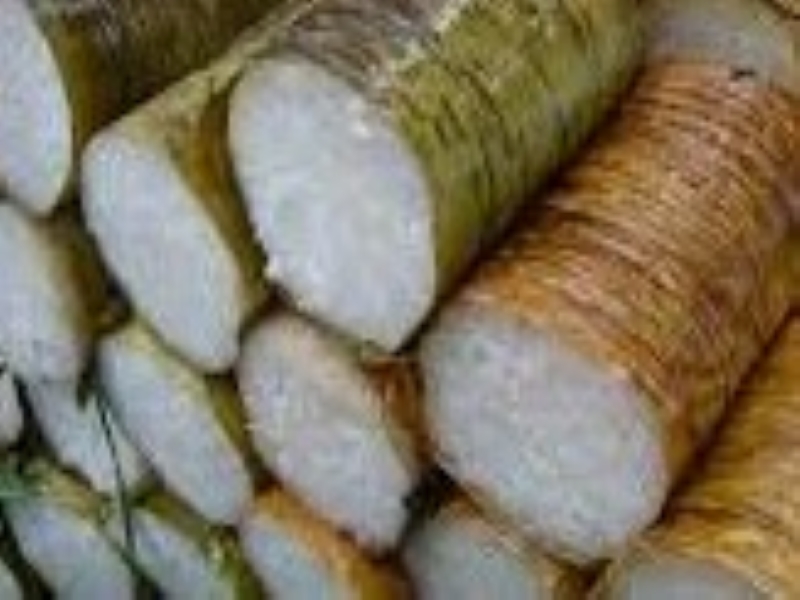
Lemang
Lemang is an Indonesian Minangkabau traditional dish made of sticky rice, coconut milk, and salt, and cooked in a hollowed bamboo tube lined with banana leaves to keep the rice from sticking to the bamboo. Similar dishes prepared from sticky rice in bamboo are prevalent throughout Mainland Southeast Asia, and it may be found in Maritime Southeast Asian countries such as Brunei, Indonesia, Malaysia, and Singapore.
During the yearly Muslim festivals of Eid-ul-Fitr and Eid-ul-Adha, lemang is typically eaten to signify the end of daily fasting.
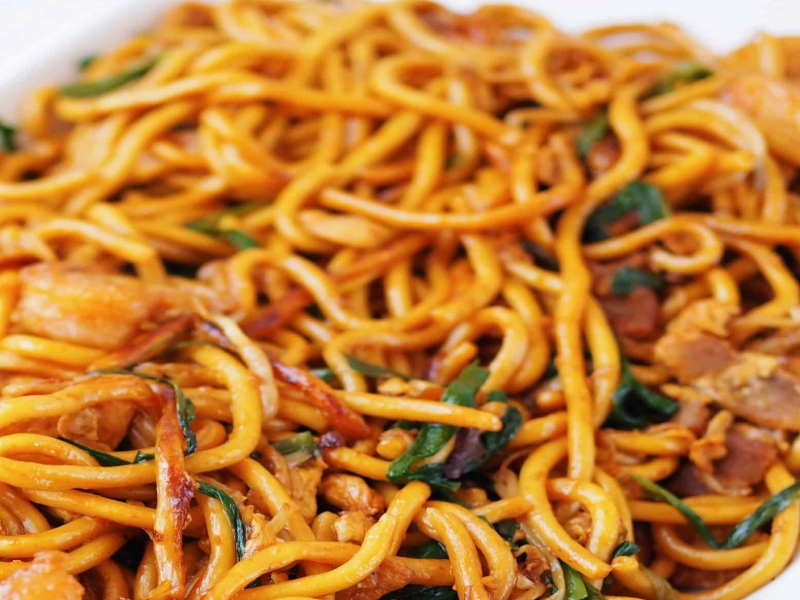
Mee Goreng
Mee goreng, also known as mi goreng, is a fried noodle dish popular in the Malay-speaking cultures of Southeast Asia’s Brunei, Malaysia, and Singapore. In Brunei, there are many different types of mee goreng. Because each dining place uses various techniques and ingredients, there is no standard method of cooking mee goreng or any derivative variants that use other types of noodles. Stir-frying the noodles with veggies, eggs, and other things like tofu is a common way. Spices, tomato sauce, potatoes, cabbage, and sweet soy sauce are common ingredients in Indian-style mee goreng. As a garnish, a slice of lime, usually of the calamansi kind, is frequently placed on the side of the plate.
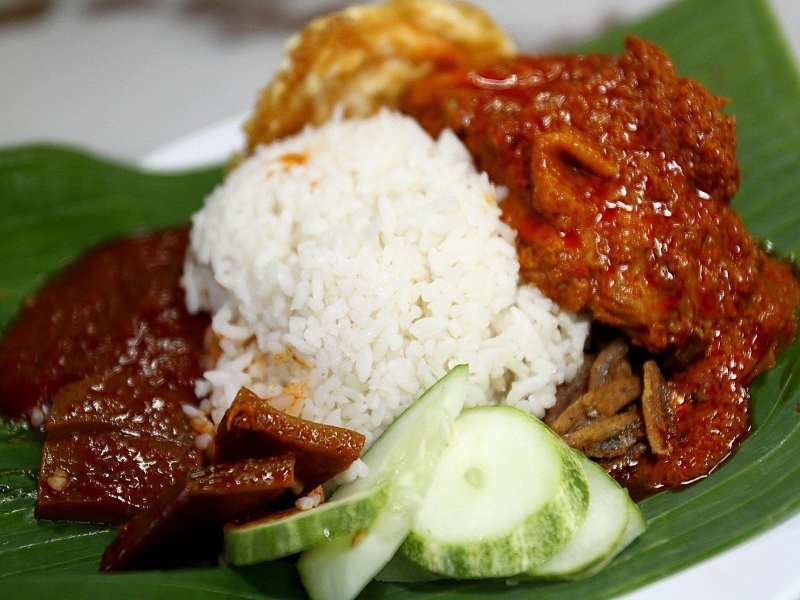
Nasi Lemak (Vegetarian)
Nasi lemak is a Malaysian dish prepared with aromatic rice and pandan leaves cooked in coconut milk. It’s also a popular dish in neighboring countries with large Malay populations, such as Brunei.
Nasi lemak is traditionally served with a spicy sauce (sambal) and a variety of garnishes, such as fresh cucumber slices, little fried anchovies (ikan bilis), roasted peanuts, and a hard-boiled or fried egg. Nasi lemak can be paired with a protein dish such as ayam goreng (fried chicken), sambal sotong (cuttlefish in chili), small fried fish, cockles, or rendang daging for a more substantial dinner (beef stewed in coconut milk and spices). Stir-fried water convolvulus (kangkong) and spicy pickled vegetable salad acar are two further accompaniments. The majority of these condiments are traditionally spicy.
How To Make Mango Sticky Rice Waffles
Overview of Main Ingredients
Mangoes
This recipe will taste better if the mangoes are ripe and fresh. It is not advised to use frozen or canned mango in this recipe. If you can’t do.
Sticky Rice
It is vital to use the appropriate kind of rice for this dish. Sticky rice is commonly referred to as sweet or glutinous rice, and it can be bought in Asian supermarkets. It must be soaked for at least four hours before being steamed rather than boiling. Your waffles will not hold together if you are not using good sticky rice.
Coconut Milk
It is essential to use full-fat, high-quality coconut milk. When you chill the can of coconut milk, you want a prominent layer of coconut cream to form on top. If you use light coconut milk, it will be too diluted to do this.
Ingredients
Sticky Rice
- Coconut milk (1 can) refrigerated
- Thai glutinous rice (1 cup)
- Salt (1/2 tsp)
- Sugar (2 tbsp)
Coconut Cream Sauce
- Sugar (1 tbsp)
- Coconut cream (3 tbsp) from coconut milk
- cornstarch (1/2 tsp)
Sliced Mangoes (2)
Instructions
- Soak the sticky rice in room temperature water overnight or a minimum of 4 hours.
- Drain the rice and rinse it until the water runs clean.
- In a big skillet or Dutch oven, place a colander or steaming basket. Fill the sink with water until it reaches just below the colander/basket. Fill the container with drained rice.
- Then, bring the water to a simmer over medium heat. Reduce the heat to a low setting and cover the pot after it has reached a simmer. Steam rice for 20 minutes with the lid on.
- After that, open the coconut milk can and spoon off the thick cream on top, placing it in a bowl. In a saucepan, combine the remaining coconut milk with 1/2 teaspoon salt and 2 tablespoons sugar. Cook, stirring often, for 5 minutes over medium heat.
- When the rice is done, transfer it to a mixing bowl and carefully add the warmed coconut milk, stirring constantly. Refrigerate the rice while you make the sauce.
- To make the coconut cream sauce, Add 1 tablespoon of sugar to the coconut cream and cook over low heat in the same saucepan as before.
- Make a mixture using 1/2 teaspoon cornstarch and 1 tablespoon water in a small bowl. Whisk in the coconut cream until the mixture thickens. Turn off the heat.
- Preheat the waffle iron and coat it with cooking oil to prepare the waffles. Spread out a bit of sticky rice on the iron by pressing down hard. Cook rice until it turns golden brown on the outside. Drizzle coconut cream sauce over waffles and top with mango slices.



